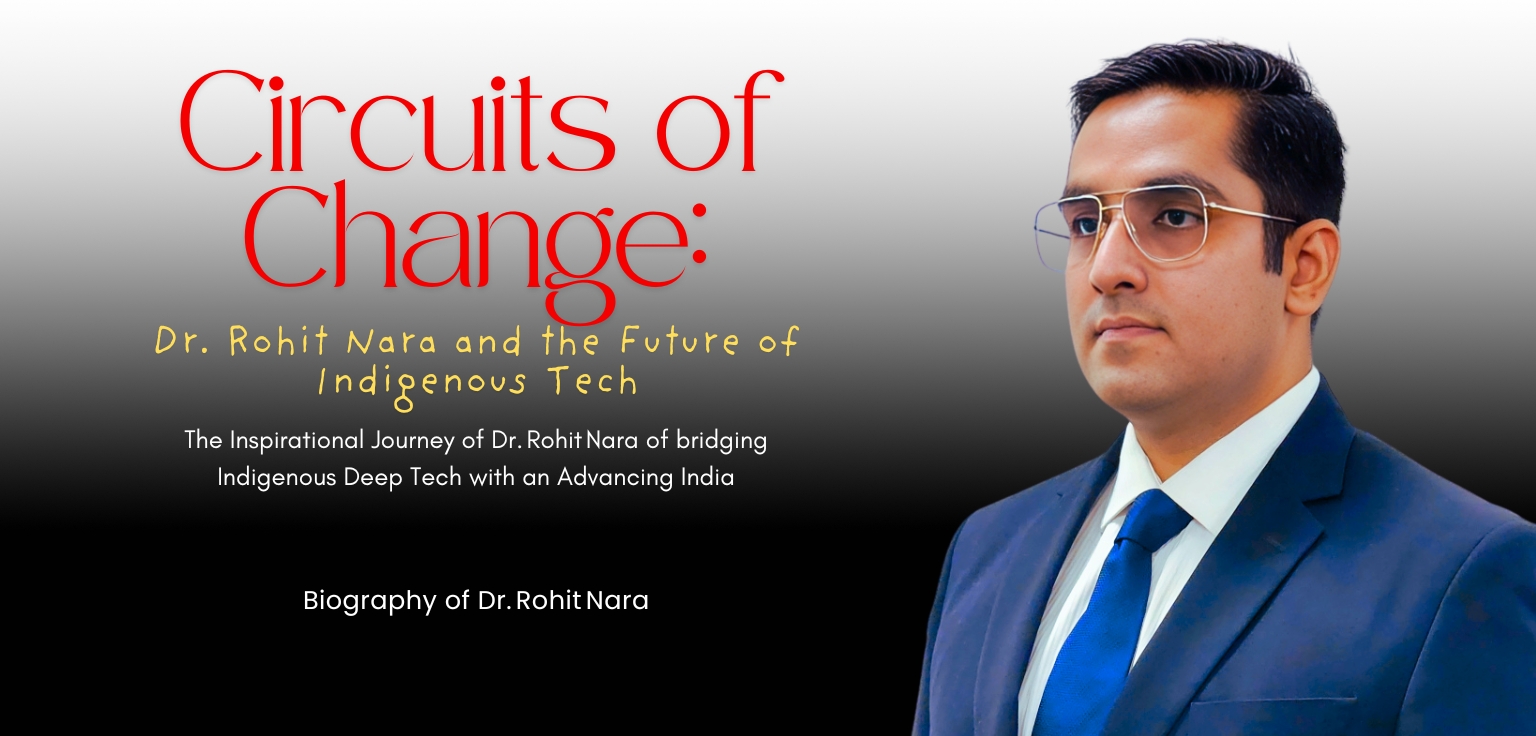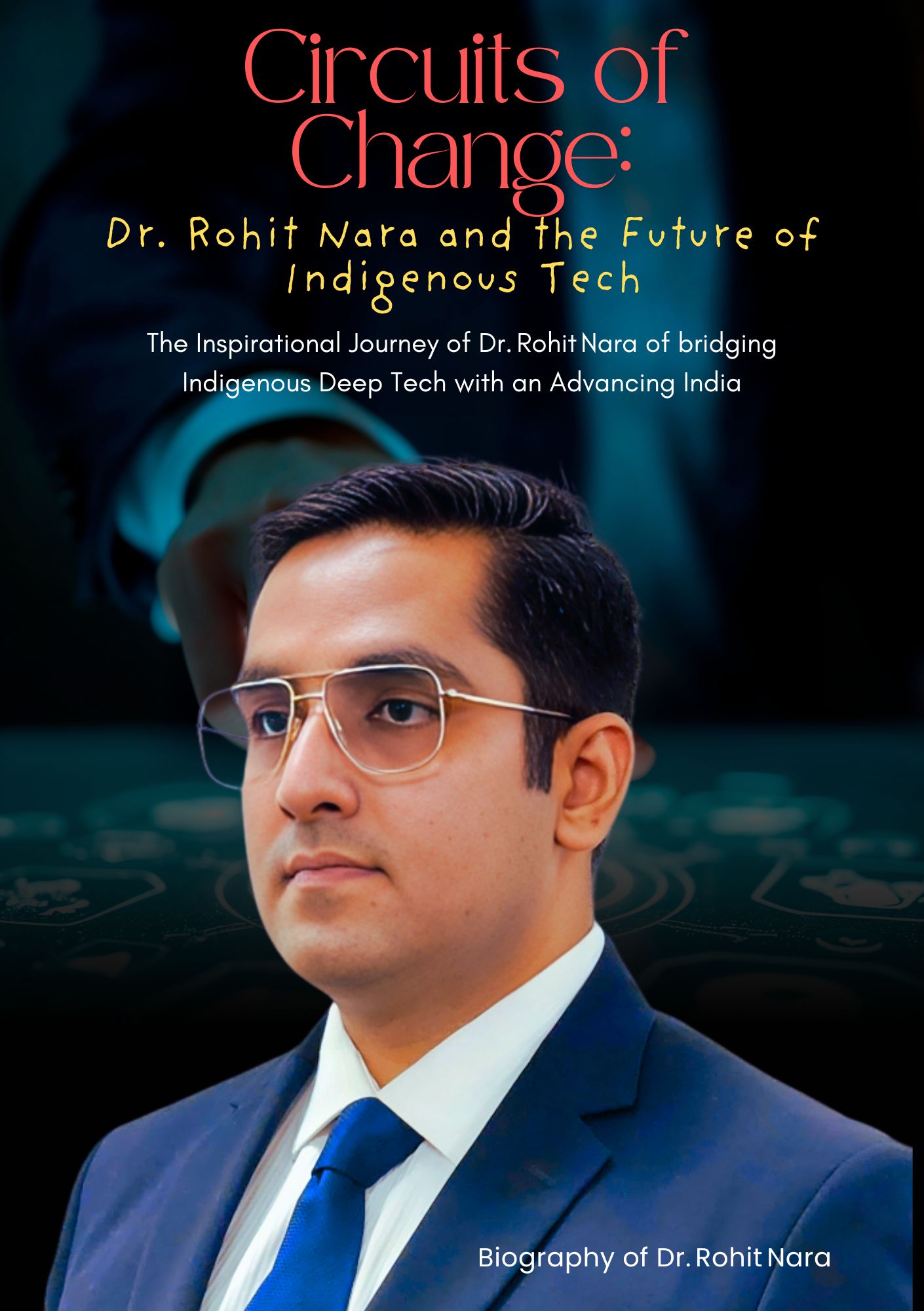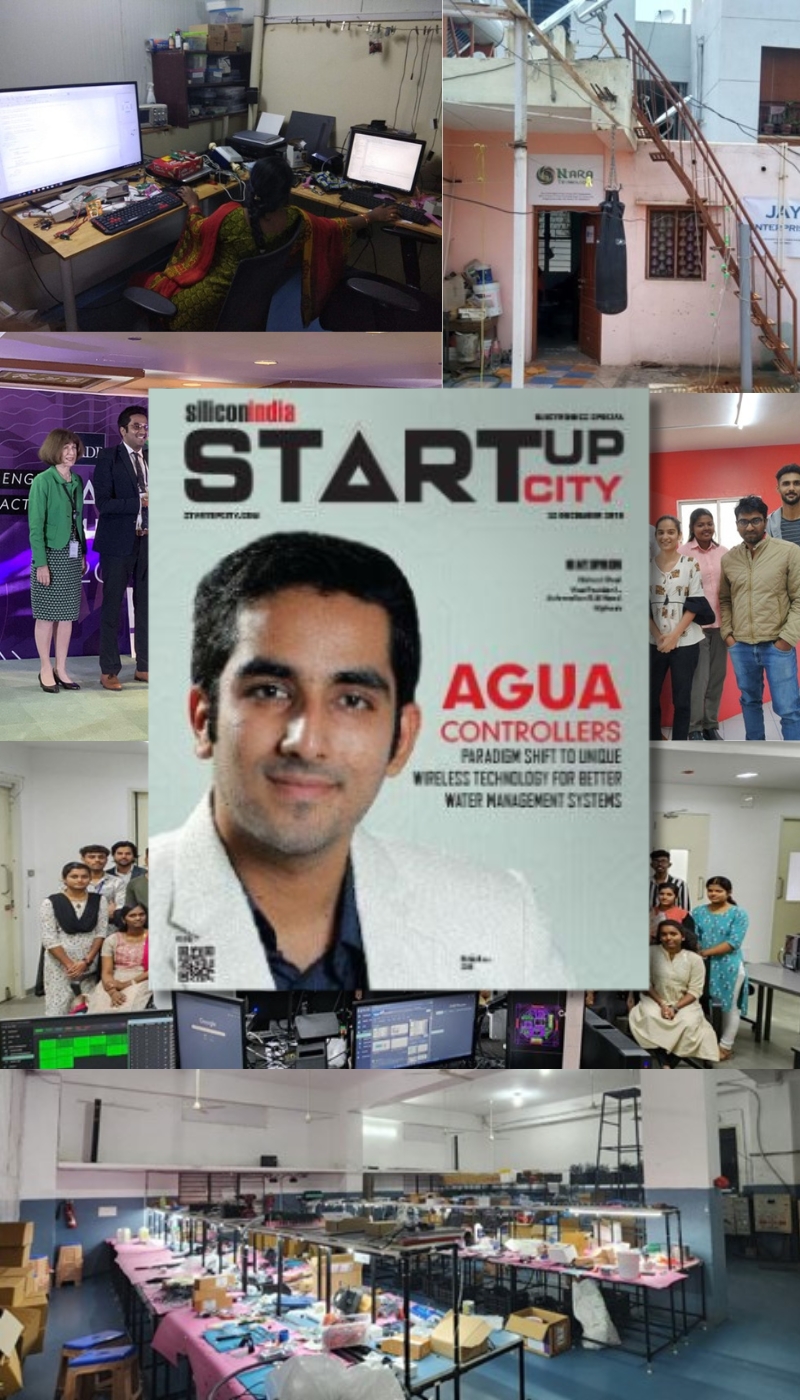

"Legacy is not the sum of accolades collected, but the culture planted—one where simplicity, service, and sustainability are sacred vows."
Dedication
This isn’t just my story; it’s ours. It begins with those who formed the bedrock of my life and supported me unconditionally through every phase.
To my parents, Mr. Ravinder Singh and Ms. Rekha Devi — you were my first teachers, shaping me with values that became my compass. You instilled in me the strength to stand tall and showed me that giving up was never an option. Your unwavering belief in my potential fueled even my most ambitious dreams. In the midst of life’s storms, you were my anchors — firm, supportive, and always present. Whether it was offering correction when needed or cheering the loudest when I dared to chase the impossible, your presence kept me grounded. During my darkest moments, when I felt like giving up, your love became the very lifeline that carried me through.
To my wife, Astha Singh — you are not just my partner in life, but my guiding light. Your unwavering love, patience, and strength have taught me the true power of family. In times when the world felt overwhelming, your presence reminded me of what truly matters. You are my calm, my courage, and my constant.
To my father-in-law, Mr. Om Praval Singh — your quiet wisdom has been a lighthouse during the most uncertain times. Your guidance has helped me navigate the often treacherous waters of business with clarity and grace. You’ve been a steady hand on the rudder, always providing perspective and strength when it was needed most.
To my sister, Manu Nara — you have always been my greatest challenger. You constantly pushed me beyond my self-imposed limits, encouraging me to leap even when fear whispered otherwise. Your belief in my potential helped me grow in ways I never imagined possible. For that, I am forever grateful.
To the entire team at NARA Technologies and to my mentors — especially Mr. Ramachandran Venkata Raman — you are the force that turns vision into reality. You take the blueprints from my mind and bring them to life with tireless dedication and unshakable belief. Your commitment, resilience, and hard work are the true foundation of our success. Raman Ji, your mentorship and faith played a pivotal role in shaping my early aspirations into tangible accomplishments.
To Mr. Sorish Arora and Mr. Kanish Agarwal — your friendship has been one of the cornerstones of my journey. We’ve navigated many complexities together, and while the path was never easy, your support made all the difference. Your presence throughout this journey has deeply influenced where we stand today.
To each of you — every circuit board we’ve built, every line of code written, and every milestone achieved is a reflection of your trust and contribution. This story — in every sense — is a shared one. And I dedicate it to you all, with heartfelt gratitude.
Phase 1 : The Roots of Life
“Curiosity can convert even the humblest room into a laboratory; the tools matter far less than the questions you dare to ask.” — Dr. Rohit Nara

The beginnings of Dr. Rohit Nara’s journey are firmly rooted in the unassuming town of Rohtak, Haryana—a place where life moved with the rhythm of the seasons and self-reliance wasn’t just a value but a way of life. Born into a family that championed both responsibility and enterprise, Rohit was subtly shaped by an environment where serving others and thinking creatively went hand in hand. These quiet but powerful influences planted the seeds for a path he hadn’t yet envisioned.
Shortly after his birth, the family relocated south to Mumbai, Maharashtra, where his father served as a Chief Petty Officer in the Indian Navy. The five years spent in naval quarters surrounded young Rohit with a fascinating blend of discipline, structure, and multiculturalism. Within those walls—where precision ruled and systems worked seamlessly—he discovered a quiet fascination with machinery, technology, and communication systems. The constant presence of naval equipment sparked his early interest in how things were built, how they worked, and how they could be made better.
The next stop in Rohit’s childhood odyssey was Kochi, Kerala—another naval port city, brimming with cultural vibrancy and sensory richness. Immersed in a world of varied languages, traditions, and festivals, Rohit developed a unique sensitivity to the nuances that define different communities. He learned to observe patterns in diversity, adapting with ease and curiosity. These transitions—from the north to the deep south, from Hindi-speaking roots to multilingual settings—quietly instilled in him the confidence to navigate different worlds, both culturally and intellectually.
After his father retired from the Navy, the family returned to a quieter life near their ancestral village in Rohtak. Gone were the structured routines of a naval base; in their place stood open fields and a modest home appliance shop his father started. It was in this shop, surrounded by soldering fumes, wires, and discarded electronics, that Rohit’s informal education truly began. He spent countless hours dismantling broken devices, studying their internal components, and—remarkably—offering advice to customers on repairing inverters and circuits. This hands-on exploration gave him an intuitive grasp of technology that no textbook could replicate.
At the same time, Rohit reconnected with his cultural and linguistic roots. While he remained fluent in Hindi and English, he also re-embraced Haryanvi, weaving himself more deeply into the local community. This ability to shift between languages and social settings became more than a survival skill—it became a foundation for designing technology that felt familiar, inclusive, and user-centric.
Unlike many of his peers, Rohit’s education extended far beyond classroom walls. His childhood was a rich tapestry woven from military discipline, the entrepreneurial pulse of the market, and his own unrelenting curiosity. While others memorized facts, he was asking deeper questions—“Why?” eventually evolved into “What if?”—and it was this mindset that laid the groundwork for a life driven by practical innovation.
In hindsight, those early years weren’t just the prologue to Rohit’s story—they were the very soil from which his identity as a human-centred technologist grew. The lessons he absorbed from naval precision, entrepreneurial hustle, and endless tinkering echo in every venture he takes on today. At his core, Dr. Rohit Nara remains that curious boy from Rohtak—still listening, still learning, and still guided by a quiet determination to make the world a little better, one thoughtful innovation at a time.
Phase 2 : Education Beyond Classrooms
“Real education starts where the syllabus ends—in the
experiments you design for yourself and the failures that teach
what textbooks cannot.”
— Dr. Rohit Nara
By conventional standards, Rohit Nara’s academic journey was remarkable. Receiving an invitation to join institutional research while still an undergraduate is a distinction few achieve. Yet, to assess his education solely through grades or degrees would be to miss the true essence of his learning path—one that was deeply unconventional and profoundly experiential.
For Rohit, learning was never limited to the pages of textbooks or the confines of classroom lectures. His most enduring lessons came through experimentation—where theories were not memorized but tested, dismantled, and reimagined under the warm glow of laboratory lights. It was here, in these quiet hours of trial and discovery, that his understanding of technology evolved into something deeply intuitive and applied.
His formal schooling began at Kendriya Vidyalaya, situated within the campus of National Aerospace Laboratories (NAL) in Bengaluru, where he studied from 2004 to 2010. The environment itself was extraordinary—on one side, the towering presence of NAL, where engineers worked on cutting-edge aerospace engines, and on the other, the prestigious grounds of Indian Space Research Organisation (ISRO). This unique ecosystem of innovation became his daily backdrop.
Immersed in this environment, Rohit found himself naturally drawn to Computer Science. He routinely finished assignments ahead of time, not to meet deadlines, but out of sheer curiosity—often rewriting them to make the solutions more efficient. His interests extended beyond the classroom. With encouragement from his friends’ parents, who worked at NAL, he began exploring their workshops. He even gained occasional access to ISRO labs, where he observed space scientists and technicians at work, absorbing every detail with the keen eye of a budding inventor.

By the time he completed his school education, Rohit was far more than a student who knew how to program. He had already developed the ability to disassemble and rebuild desktop computers with meticulous precision, and could engage in meaningful conversations about programming languages with the confidence of someone far beyond his years. These formative experiences laid the groundwork for what would become a lifelong journey of building, innovating, and learning by doing.
Phase 3 : A Journey Across Innovative Frontiers
“Technology without empathy is noise; fuse it with understanding and it becomes progress.” — Dr. Rohit Nara
The professional journey of Dr. Rohit Nara has been anything but conventional. Rather than following a predictable route, his career unfolded as a rich tapestry of diverse experiences — beginning in the unexpected realm of artistic leadership, transitioning into rigorous academic research, and eventually expanding into roles that bridged social technology, industrial automation, cloud systems, and the rapidly evolving Internet of Things (IoT). Each step, no matter how unorthodox, shaped him into the multifaceted and impact-oriented technologist he is today.
The first chapter of his professional life began in an unlikely setting: the performing arts. In the autumn of 2010, even as he was deeply engaged in his engineering studies, Rohit assumed the role of Crew Manager for Lethal Hustlers — a high-energy dance ensemble comprising fourteen artists specializing in hip-hop, salsa, breakdance, bhangra, and robotic movement. His responsibilities went far beyond managing schedules. He choreographed routines, aligned the team’s creative vision, mediated conflicts, and ensured seamless execution during high-pressure performances. Far from a detour, this experience served as an early masterclass in leadership, collaboration, and creative execution. It taught him how to manage personalities, maintain discipline, and bring rhythm and harmony to a collective performance — lessons that would later find resonance in his engineering and entrepreneurial ventures.

By 2014, just after filing his second patent, Rohit officially stepped into the entrepreneurial landscape with the founding of Nara Technologies Private Limited (OPC). This venture ran parallel to his ongoing research at the Cambridge Institute of Technology, where between 2013 and 2015, he led the development of eleven pioneering technologies. As previously explored, this period solidified his engineering ethos: that true innovation lies in building technology that addresses real human challenges. His lab work wasn’t just theoretical—it consistently produced functional prototypes that merged scientific inquiry with social utility.
Hungry for broader impact and real-world engagement, Rohit transitioned into the startup ecosystem. In March 2015, he joined Idea Coe, a Bengaluru-based company focused on social and mobility technologies, as Director of Social and Mobility. Over an intense four-month tenure, he led multiple interdisciplinary projects that reimagined how users interacted with mobile and social networking platforms. From designing adaptive user experiences across devices to building secure cloud-based systems with role-based access, his work spanned technical development and strategic thinking.
At Idea Coe, Rohit’s role extended well beyond engineering. He helped shape advertising strategies, collaborated with internal design and product teams, and engaged with external stakeholders to position the company’s offerings in an increasingly competitive market. This period marked his deeper foray into human-centered design, product storytelling, and technology strategy. He analyzed user behavior, crafted compelling client presentations, and helped forge alliances that balanced immediate growth with long-term sustainability. In essence, he evolved into not just a creator of technology, but a visionary who could translate user needs into innovative, scalable solutions.
Each of these roles—no matter how distinct in domain—contributed to Rohit’s evolution into a deeply empathetic technologist. Whether choreographing a dance crew or architecting a cloud-based user platform, his central philosophy remained unchanged: Innovation must serve people, not just markets.